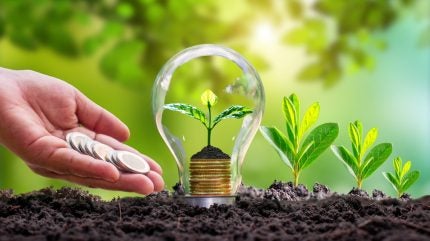
The concept of a circular economy has gained significant traction in recent years as businesses and policymakers seek sustainable solutions to reduce waste and maximise resource efficiency.
Unlike the traditional linear model, which follows a ‘take-make-dispose’ approach, a circular economy is designed to keep products, materials, and resources in use for as long as possible.
While the idea is compelling, the challenge lies in its effective implementation. Organisations must adopt practical strategies to transition towards circularity while maintaining economic viability.
Designing for longevity and recyclability
One of the core principles of a circular economy is designing products that are built to last. This involves selecting durable materials, ensuring ease of repair, and enabling future upgrades.
Companies should move away from planned obsolescence, where products are deliberately designed with a limited lifespan, and instead prioritise longevity through high-quality craftsmanship and modular designs.
Recyclability is another essential consideration. Products should be made from materials that can be easily disassembled and reintroduced into the production cycle.
For instance, brands in the electronics sector are increasingly exploring modular smartphones that allow consumers to replace individual components rather than disposing of the entire device.
Similarly, the fashion industry is experimenting with biodegradable textiles and mono-material garments that simplify recycling processes.
Regulations and incentives also play a role in encouraging businesses to integrate circular design principles.
The European Union’s Circular Economy Action Plan, for example, promotes eco-design requirements and extended producer responsibility (EPR) schemes, which make manufacturers accountable for the entire lifecycle of their products.
Fostering reverse logistics and closed-loop systems
For a circular economy to function effectively, businesses must establish robust reverse logistics systems that enable the return, refurbishment, and reuse of products. Reverse logistics involves the collection of used goods from consumers and their reintegration into the supply chain. This can take various forms, such as deposit return schemes, buy-back programmes, and trade-in options.
The technology sector provides notable examples of successful reverse logistics. Companies like Apple and Dell have implemented take-back schemes where customers return old devices for refurbishment or material recovery.
These programmes not only minimise electronic waste but also offer financial incentives to consumers, making circularity more attractive.
Closed-loop systems are another vital component of circularity, ensuring that materials continuously cycle through the economy rather than ending up in landfill. For instance, some packaging companies have developed refillable and reusable containers for food and personal care products.
By collaborating with consumers and retailers, businesses can create systems where packaging is collected, sanitised, and refilled, reducing the need for single-use materials.
Shifting towards circular business models
Beyond product design and logistics, the transition to a circular economy requires innovative business models that move away from ownership-based consumption. One such model is product-as-a-service, where companies retain ownership of products and offer them to consumers through leasing or subscription services.
This approach is already being adopted in industries such as automotive, electronics, and fashion.
For example, car-sharing services reduce the demand for private vehicle ownership, leading to lower resource consumption and emissions. Similarly, companies like Philips provide lighting as a service, where businesses pay for the use of light rather than purchasing bulbs outright.
This model ensures that manufacturers remain responsible for maintenance and end-of-life recycling, promoting sustainable resource use.
Another emerging model is industrial symbiosis, where businesses collaborate to use each other’s waste as a resource. A classic example is Kalundborg Symbiosis in Denmark, where multiple industries share resources such as excess heat, water, and by-products, creating a self-sustaining industrial ecosystem.
Consumer behaviour also plays a crucial role in enabling circular business models. Educating customers on the benefits of repair, resale, and shared ownership can drive demand for sustainable alternatives.
Platforms like Vinted and Depop have capitalised on the resale market, making second-hand fashion more mainstream and reducing the environmental impact of fast fashion.
Ultimately, implementing a circular economy requires a multi-faceted approach that includes thoughtful product design, efficient reverse logistics, and innovative business models.
While challenges remain, advancements in technology, regulatory support, and shifting consumer attitudes are paving the way for circular practices to become the norm.
By prioritising sustainability and resource efficiency, businesses can not only reduce their environmental impact but also create long-term economic value.
The transition may not happen overnight, but with continued effort and collaboration, a truly circular economy is within reach.



